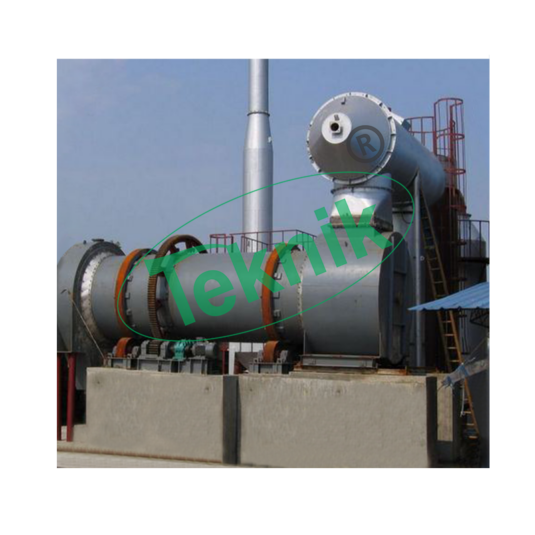Explore Rotary Kiln Incinerator Process for Mobile Waste Systems and Environmental Compliance
What is a Mobile Waste Incinerator?
A mobile waste incinerator is a self-contained, movable waste treatment facility designed to handle a wide variety of waste types. These systems are typically mounted on trailers, skids, or containers and are engineered for deployment in emergency zones, military bases, remote industrial operations, disaster relief areas, and temporary construction sites.
These units are particularly valuable when waste must be treated immediately on-site, either because of logistical challenges or due to the hazardous nature of the waste. Mobile incinerators prevent the risks associated with storing or transporting untreated waste and offer an eco-friendly alternative to landfilling, which can lead to soil and groundwater contamination.
Introduction to Rotary Kiln Incinerator Process
The rotary kiln incinerator process is a robust and flexible waste treatment method widely used in both stationary and mobile waste management systems. A rotary kiln is a cylindrical, slightly inclined, rotating furnace lined with refractory materials. Waste is fed into the upper end of the kiln and moves down through it as it slowly rotates.
This motion ensures thorough mixing and exposure to high temperatures, leading to complete combustion of the waste. The kiln is typically followed by a secondary combustion chamber (afterburner) where any remaining volatile compounds are destroyed, ensuring the exhaust gases meet strict environmental standards before emission.
Key Components of the Rotary Kiln Incinerator System
- Feeding System: The feeding system introduces waste into the kiln in a controlled manner. For mobile units, this system is compact but designed to handle variable feed types, including solids, sludges, and liquids.
- Rotary Kiln: This is the heart of the incineration process. Operating at temperatures typically ranging between 850°C to 1200°C, the rotary kiln ensures the physical and chemical breakdown of waste materials through pyrolysis, oxidation, and gasification.
- Secondary Combustion Chamber: The hot gases exiting the kiln enter a secondary chamber where combustion is completed at even higher temperatures (around 1100°C), ensuring the destruction of dioxins, furans, and other hazardous compounds.
- Air Pollution Control System (APCS): This system treats the flue gases to remove particulate matter, acidic gases, heavy metals, and organic pollutants before release into the environment. APCS may include scrubbers, filters, and catalytic converters.
- Control and Monitoring Unit: Modern mobile rotary kiln incinerators are equipped with real-time monitoring and automated control systems to ensure optimal combustion and continuous compliance with emission standards.
Advantages of Rotary Kiln Incinerator Process in Mobile Systems
- Flexibility in Waste Handling: Rotary kilns can process a wide variety of waste types, from municipal solid waste and medical waste to industrial hazardous waste and chemical residues. This flexibility is crucial in mobile systems where waste composition may vary.
- High Thermal Efficiency: The process ensures uniform temperature distribution and efficient mixing, leading to high combustion efficiency and minimal unburned residues.
- Environmental Compliance: Due to complete combustion and advanced pollution control systems, the rotary kiln incinerator process helps mobile systems meet strict environmental regulations, including limits on NOx, SOx, CO, dioxins, and particulate matter.
- Portability and Rapid Deployment: The rotary kiln-based mobile waste incinerator units are designed for fast transportation and setup. They can be operational within hours of deployment, making them ideal for emergency and disaster response scenarios.
- Minimal Residual Waste: The ash and inert residues generated are significantly reduced in volume and are often non-hazardous, making final disposal easier and safer.
Applications of Mobile Rotary Kiln Incinerators
- Military and Remote Base Operations: For managing waste generated at isolated bases where traditional disposal options are unavailable.
- Disaster Relief and Emergency Response: To quickly manage biomedical and municipal waste in affected areas and prevent the spread of disease.
- Industrial and Oil Field Camps: Temporary camps and field operations benefit from on-site waste treatment that adheres to environmental standards.
- Medical Waste Management: Hospitals and mobile clinics in rural or underdeveloped regions can use these systems for safe disposal of infectious waste.
Environmental Impact and Compliance
One of the main reasons for adopting the rotary kiln incinerator process in mobile units is its ability to meet stringent environmental compliance regulations. Emissions from incineration are a major concern, especially when dealing with hazardous or medical waste. Proper operation and advanced emission control systems ensure that emissions remain within permissible limits, thus safeguarding air quality and public health.
Regulatory agencies across the globe, including the U.S. EPA, EU directives, and other national bodies, provide strict guidelines for waste incineration, covering aspects such as operating temperature, residence time, and emissions monitoring. Mobile rotary kiln incinerators are specifically designed to meet or exceed these regulations.
Conclusion
The integration of the rotary kiln incinerator process into mobile waste incinerator systems offers an effective, flexible, and environmentally compliant solution for modern waste management needs. Whether deployed in emergency zones or remote operations, these systems provide reliable, on-site waste disposal with minimal environmental impact and maximum operational efficiency.

Comments
Post a Comment